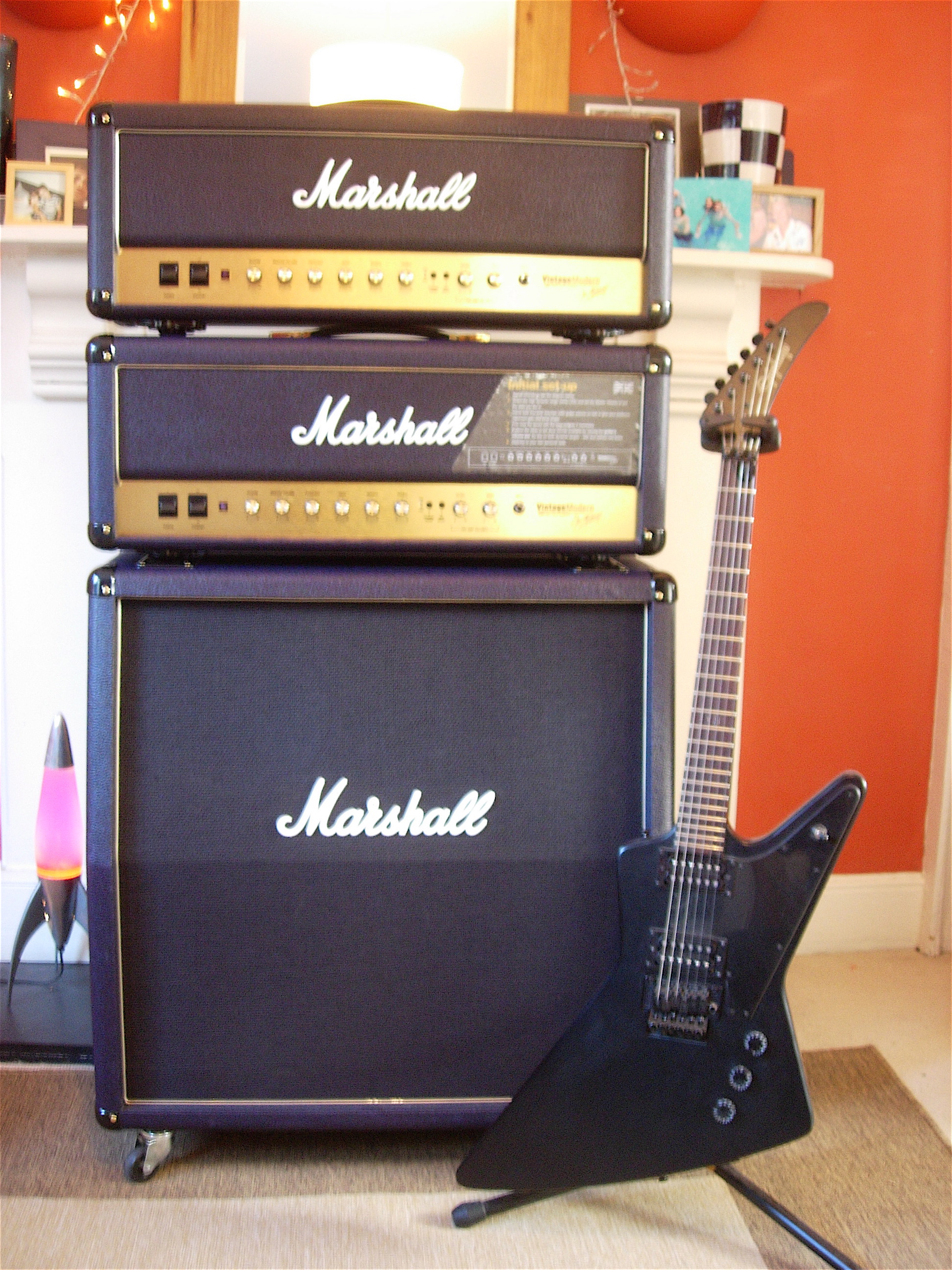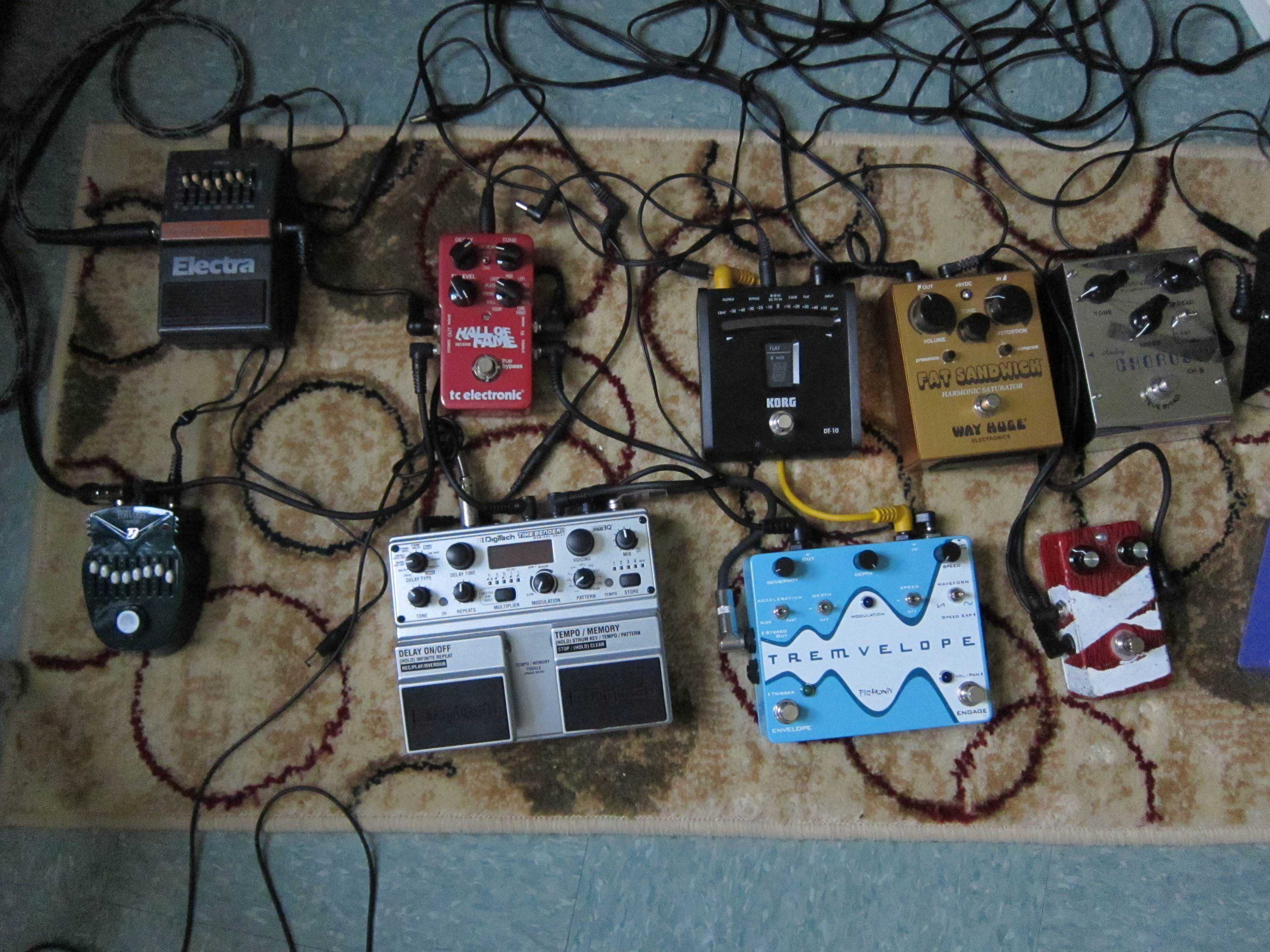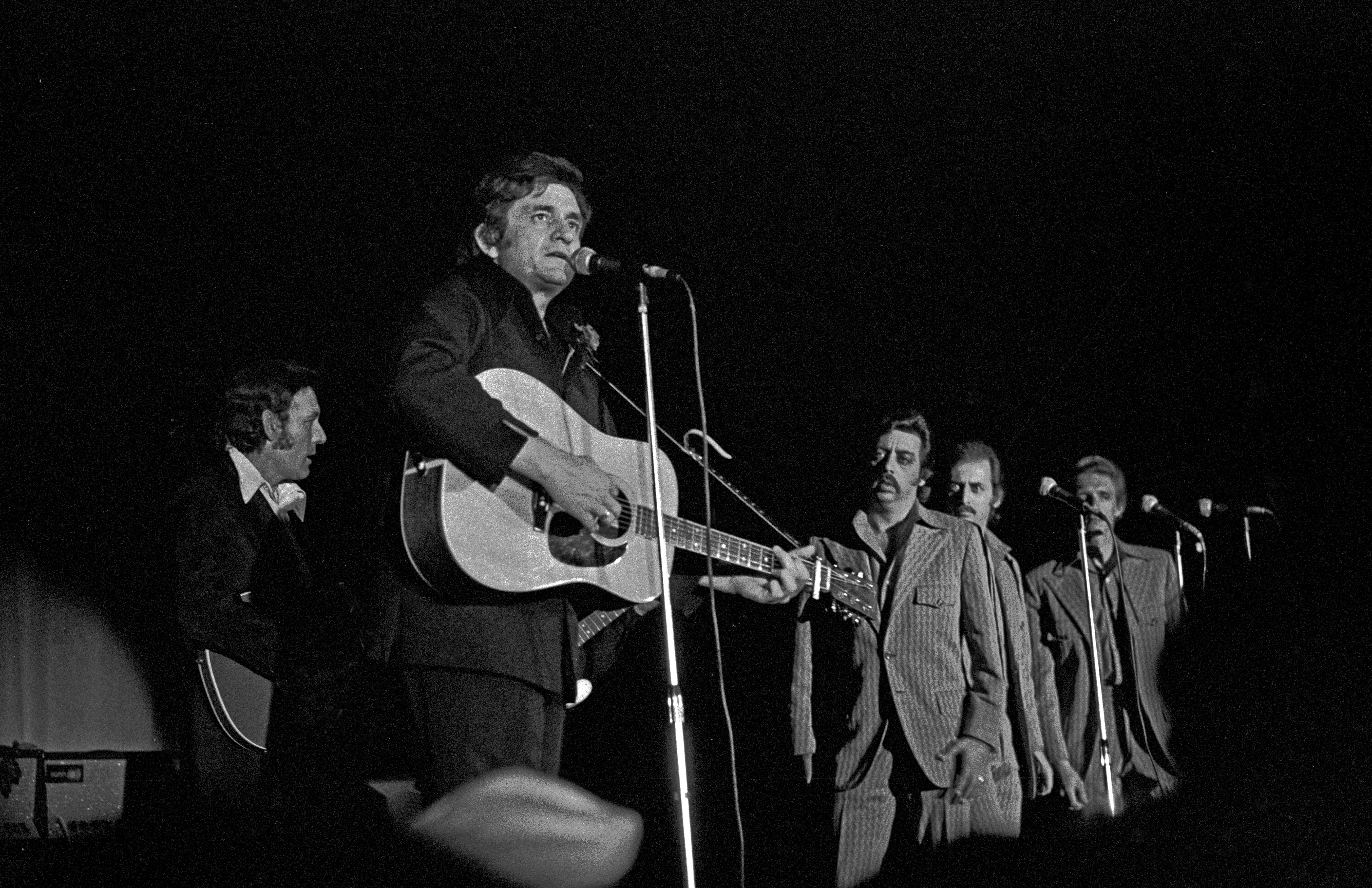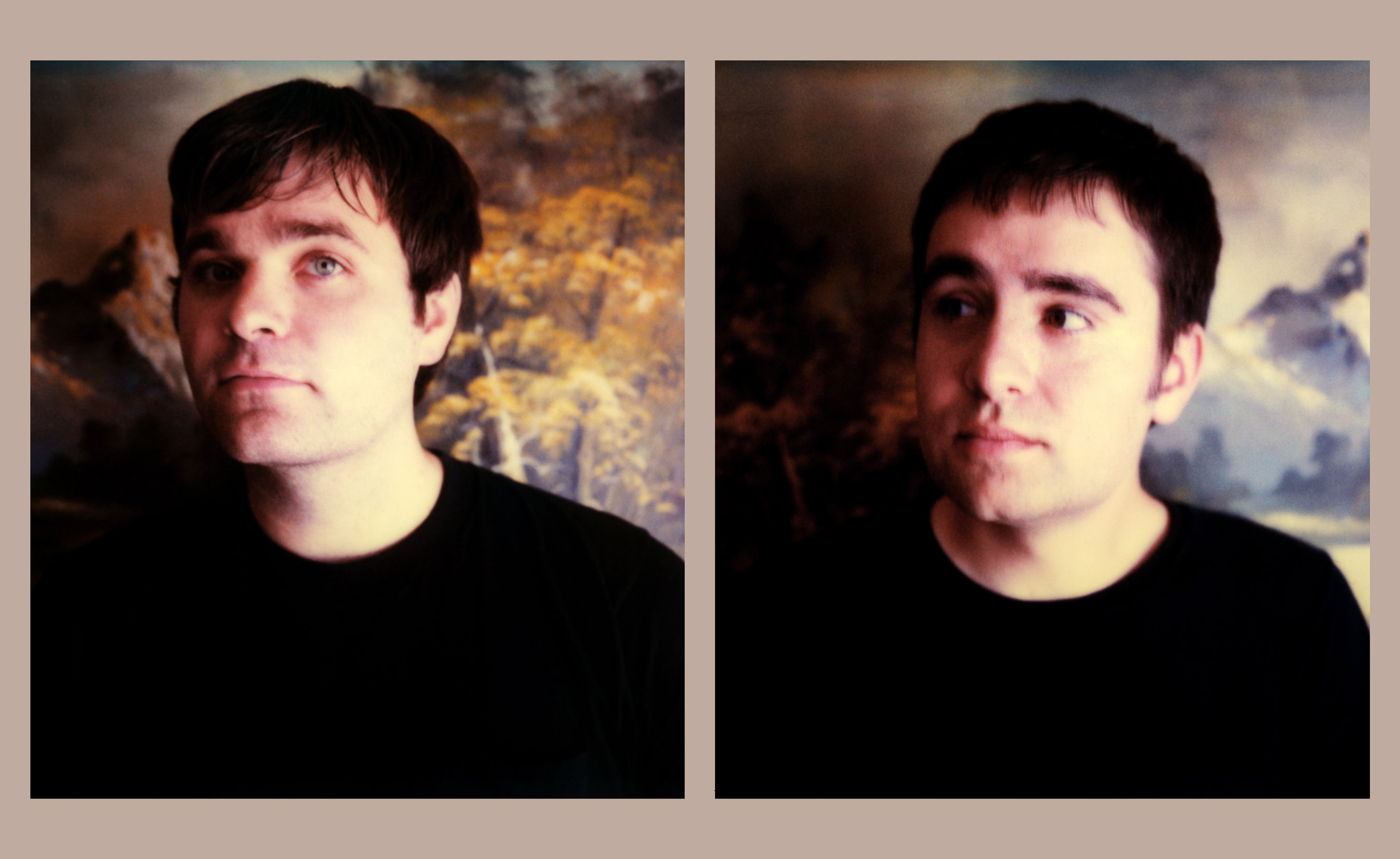Amplification, Distortion & Noise

While electric and electronic devices can be used to supplement acoustic musical instruments — and to create original sounds with comparable musicality — musicians sometimes make use of the sonic byproducts of the devices themselves.
Amplification
Prior to the rise of electrical devices, musical performance for large audiences relied on the use of loud instruments, large performing forces, or venues acoustically designed to naturally amplify the musicians on stage.
The volume of a sound is determined by a wavelength's amplitude, which in turn represents the amount of pressure acting upon the molecules in the air. As waves of pressure move through the air, a wavelength's amplitude will decrease. Thus, sounds with higher amplitude travel farther before decaying into silence.
Increasing a wavelength's amplitude requires power; a device which takes an audio signal and uses electrical power to increase its amplitude is called an amplifier. Amplifiers can range from small, low-power devices present in consumer electronics like smartphones to large, heavy components used in arenas and other large venues.
Public Address Systems
A public address system or PA system is an electric system designed to amplify sound, usually over a large area. The term sound reinforcement system is sometimes used to refer to PA systems used for live musical performances as opposed to recorded music or public speaking, but the terms are often used interchangeably.
The primary components of a PA system include microphones, amplifiers, and loudspeakers. Actual systems, especially those used in performance venues, may include other related equipment such as mixers and media players, and may include specialized types of components to meet specific needs.
PA systems, especially those in larger venues, require powerful amplification. Connecting or disconnecting a PA system component, or powering it on or off, can create small interruptions in the intended electrical pathways. When amplified, these normally harmless short circuits can create loud pops that can be damaging to amplifiers, speakers, and ears. To prevent this, amplifiers should always be the last components of a PA system to be turned on, and should always be the first components to be turned off.
Gain Staging
PA systems necessarily contain large lengths of audio cable to distribute audio over large areas. Even with insulation and other forms of shielding, these cables can be susceptible to electromagnetic interference from the environment. Sound engineers strive to ensure that the intentional part of a transmission, the signal, has a much higher amplitude than the result of electromagnetic interference or other environmental factors, which is referred to as noise.
As a signal passes through the components of a PA system, there may be several points at which volume can controlled. On a mixing board, for example, each input channel will often have a knob controlling the volume as it enters the mixer, a fader controlling the relative volume of that channel in the mix, and faders controlling the volume of the final audio mix. These points are called gain stages.
If a weak signal — a transmission with a low signal-to-noise ratio — is amplified, the noise will be amplified along with the signal, giving a low-quality result. To prevent this, volume should be managed as late in the process as possible, with earlier volume controls set to a full volume. The process is called gain staging.
Distortion
When the amplification of an audio signal reaches the power limit of an amplifier, the result is distortion of the audio. Distortion can be visualized on a waveform diagram by clipping the waveform so it does not exceed a certain amplitude.
For example, a sine wave, when clipped to a given amplitude, takes on the shape similar to a square wave. The aural result is a change in timbre.
Controlled distortion is a common playing technique for electric guitar. American singer, songwriter and guitarist Chuck Berry incorporated distortion into the rhythm and blues of the 1940s to pioneer a new genre, rock and roll.
Electric Guitar Distortion
Electric guitarists, as well as electric bassists, sometimes categorize different levels of distortion. Heavily amplified playing which pushes to the brink of distortion is called overdrive, and over-amplification to the point where the sound begins to break down is called fuzz.
Because relying upon an amplifiers built-in limits to create distortion requires playing at very loud volumes, modern electric guitarists make use of effects pedals — devices which are added to the chain between the electric guitar and the amplifier, which switches meant to be controlled with the guitarist's foot — to create an artificial, adjustable limit at lower volumes.

Feedback
When a PA system is arranged so that the sound coming from the loudspeakers are picked up by the microphones, a single sound will be immediately cycled through the system continuously, being amplified in each loop. This is called a feedback loop. If the cycle is not quickly interrupted — by moving the microphone away from the speaker, or by turning the volume down completely, it will continue to increase in amplitude, potentially damaging hearing of those nearby, until the amplifiers or speakers physically fail.
One of the many techniques pioneered by American singer, songwriter and guitarist Jimi Hendrix was incorporating controlled feedback into the electric guitar's sound. Hendrix would stand in front of loudspeakers so that the speakers' sound causes his guitar strings to resonate, creating a feedback look which he would shape through position and technique.
Noise
In audio engineering, noise — any part of an audio feed that is not the intended target or signal — is by definition undesirable. However, in many cases musicians will incorporate noise to create a specific effect.
Environment
Musicians will often produce and sell live recordings as a means of portraying the energy and pace of a concert performance. While live recordings of band, orchestra and choir music are often distinguishable from studio recordings only by the inclusion of applause afterward, popular artists' live recordings might include interactions with the audience during performances or extended improvisational solos.

In some cases, musicians will include sounds into recordings which are usually avoided as a means of creating a more genuine or intimate recording. These might include the intake of breath by a singer or wind player or the squeaking of fingers against the strings of a guitar.
Media Sounds
Certain types of recording media or methods of transmission will add a unique layer of noise to the recording, and musicians will sometimes deliberately add this effect to a studio recording to create a particular ambience.
A common example is the unique crackle which results from a record needle encountering dust particles and tiny scratches in the grooves of an LP. Some listeners feel this creates a sense of warmth to vinyl LP recordings which is not captured by digital recording methods.

Silence
Special aural effects can be created by moving a soundwave out of phase so it counteracts another soundwave. Noise-cancelling headphones include microphones to detect the ambient sound around the user and an onboard microchip which takes that sound and generates a correlating sound but with the opposite amplitude. The result is an unnatural silence which some people find unsettling.
Amplification, Distortion & Noise: Summary
- The volume of a sound is determined by a wavelength's amplitude, which naturally decreases as it travels through the air.
- Amplification involves the use of electrical power to increase a sound's amplitude to allow it to travel farther.
- A public address system is a system comprised of microphones, amplifiers and loudspeakers and related equipment designed for broadcasting sound over a large area.
- Public address systems used for musical performances are sometimes referred to as sound reinforcement systems.
- Because components can send surges through the system when powered on and off, it is important to turn amplifiers on last during setup and turn them off first for disassembly.
- The difference in volume between desired audio and ambient background noise is called the signal-to-noise ratio. A low signal-to-noise ratio denotes a large amount of noise in a broadcast or recording, which reduces its quality.
- Signal-to-noise ratio in a system with multiple components is managed by gain staging: ensuring a high-volume signal through the system and controlling volume late in the audio chain.
- Distortion occurs when an audio signal's amplitude exceeds an amplifier's power limit; the extremes of the waveform are clipped, creating more square waves and changing the sound's timbre.
- Distortion is commonly used as an intentional technique by electric guitarists, who often use effects pedals: audio components designed to be engaged by pressing a foot switch.
- Feedback occurs when a speaker's output is recursively re-amplified by a connected microphone.
- Left unchecked, feedback will rapidly continue to increase in amplitude and damage hearing and audio equipment.
- Feedback can be stopped by moving the microphone away from the speaker, or by turning the volume down on the system.
- Guitarists like Jimi Hendrix incorporate feedback into their playing by allowing speaker's sound to vibrate the guitar strings.
- Noise, defined as the undesirable or unintentional part of an audio signal, is sometimes used as an effect.
- Live recordings include audience reactions and interactions as a means of capturing the energy of a concert atmosphere.
- Non-musical performance sounds like a singer's breath or the squeaks of a guitarist's fingers on the strings can add intimacy to a recording.
- Audio idiosyncracies of specific media, like vinyl record crackle can add warmth or ambience to a recording.
- Artificial silence can be created through soundwave cancellation, creating a sometimes unnatural effect.